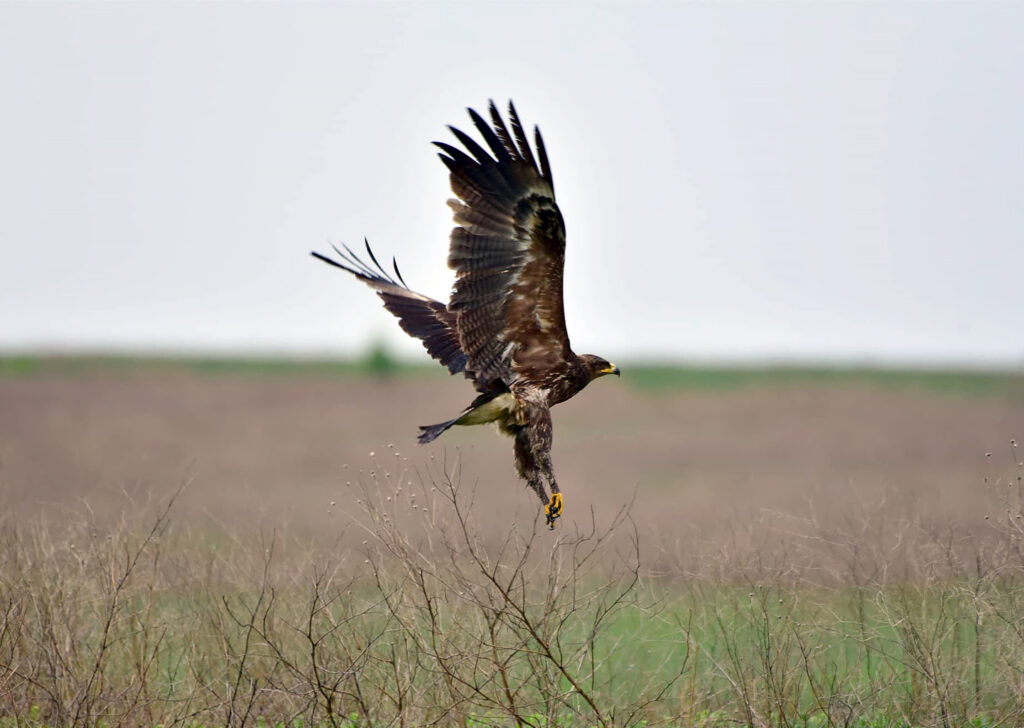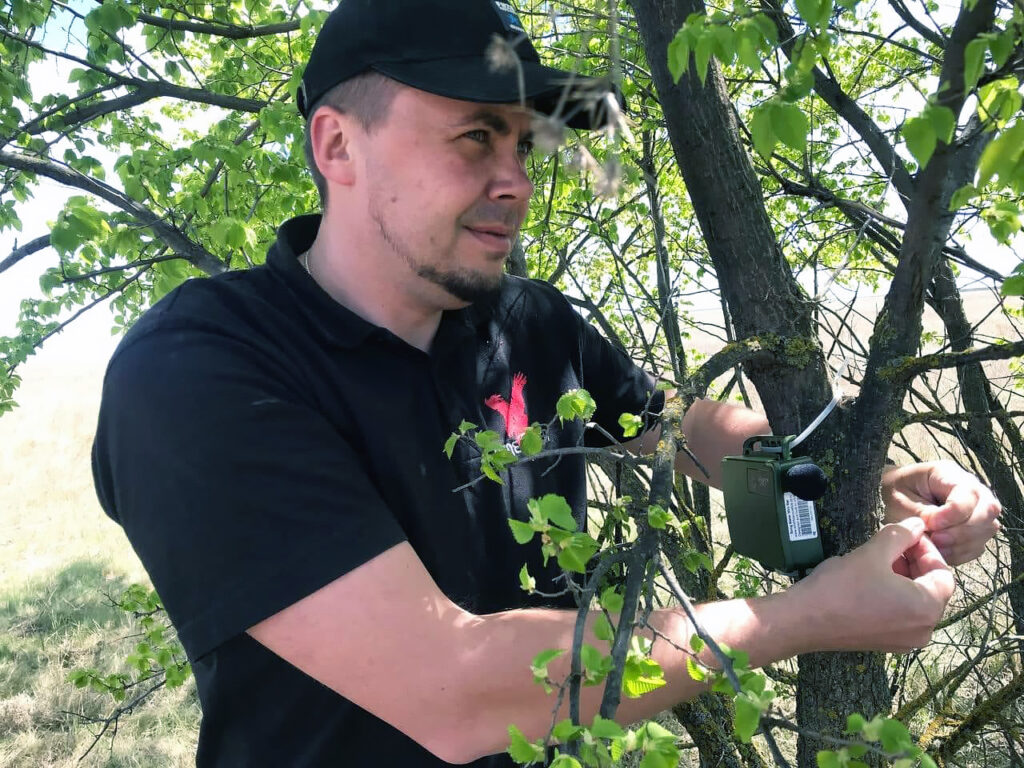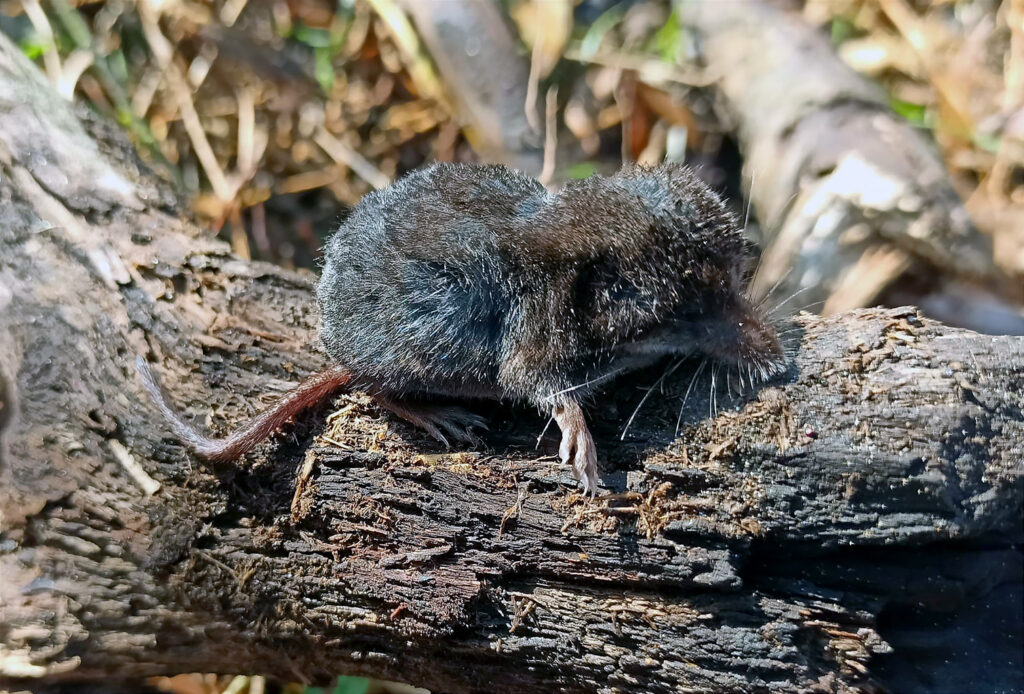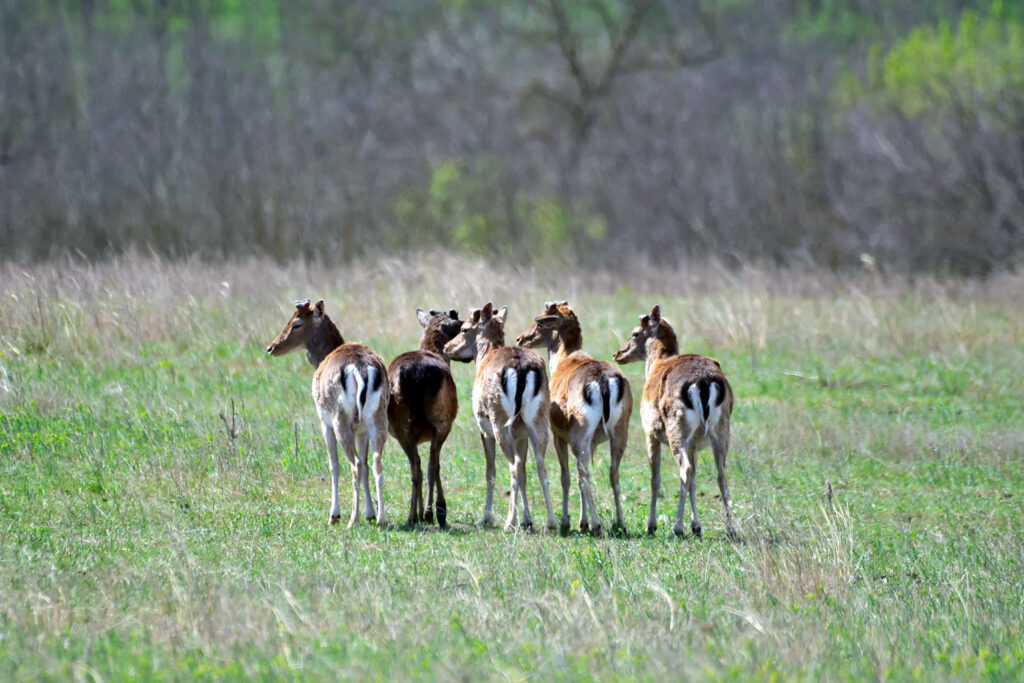Scientists conducted research in the Tarutino Steppe using acoustic monitoring devices. This method made it possible to detect rare bats and rodents in the steppe, as well as many bird species.

In the spring and summer of this year, a team of experts of Rewilding Ukraine installed several special acoustic monitoring devices in the steppe, which we received from the British Trust for Ornithology to study the region’s biodiversity. The position of the devices was changed several times to obtain data in different areas of the steppe: on open grassy plains, in valleys overgrown with trees and bushes, in an adaptation enclosure with kulans, European fallow deer, and marmots.
“Acoustic monitoring is a modern method of research in which animals in a certain area are detected and identified using the sounds they emit. The artificial intelligence then compares the received sound recordings with a library that includes data on thousands of species. It is very interesting to decipher the records of devices and learn about the presence of the smallest animals in the steppe, which are quite difficult to detect and identify otherwise,” says Mykhailo Nesterenko, executive director of Rewilding Ukraine.

Thus, according to the results of the research, many species of bats were discovered in the Tarutino steppe this year, such as the serotine bat, Nathusius’ pipistrelle, brown long-eared bat, noctule bat, parti-coloured bat, Brandt’s bat, and other species. All of them are included in the Red Book of Ukraine and are also protected by various international agreements. Of the insectivorous mammals, the Eurasian pygmy shrew and the common shrew were recorded, and of the rodents – the brown rat and the hazel dormouse. The latter finding is interesting but requires verification.
“When you get to the steppe, at first it seems that few animals live here. But if you wait quietly and are attentive, you can see and even photograph many local inhabitants: birds, mammals, reptiles, not to mention numerous insects. But modern scientific methods, such as acoustic monitoring, allow us to learn about secretive, nocturnal, and smallest animals. The Nathusius’ Pipistrelle and the Common Pipistrelle, which are the smallest bats in Europe, are so small that they can hide in a matchbox,” says biologist Maksym Yakovlev, who conducted the research.

The Tarutino steppe is one of the few preserved steppe areas in Ukraine and Europe. It is home to rich biological biodiversity, with rare animals that are protected at national and international levels. Among them are the black stork, ruddy shelduck, long-legged buzzard, lesser spotted eagle, short-eared owl, badger, and spotted suslik. The Rewilding Ukraine team, together with local partners restored the damaged areas of the steppe and brought back the large herbivores into the steppe, such as kulan, European fallow deer as well as steppe marmot, etc.
The research was carried out within the framework of the partnership project “Assessing the Impact of Restoration on Biodiversity Using Acoustic Monitoring”, funded by the Endangered Landscapes Program. The data collected as a result of the monitoring stress the value of the Tarutino steppe, its importance for the preservation of the animal world, and provide justification for increasing the protection status of the area. In addition, acoustic monitoring has proven quite useful as a method of scientific research. It can help close the gaps in the knowledge of the animal world in other parts of the Ukrainian Danube region.
